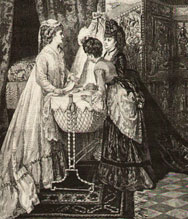Cradle
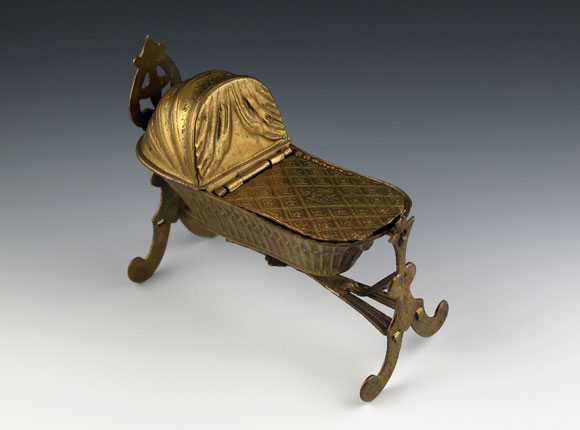
Needle Case
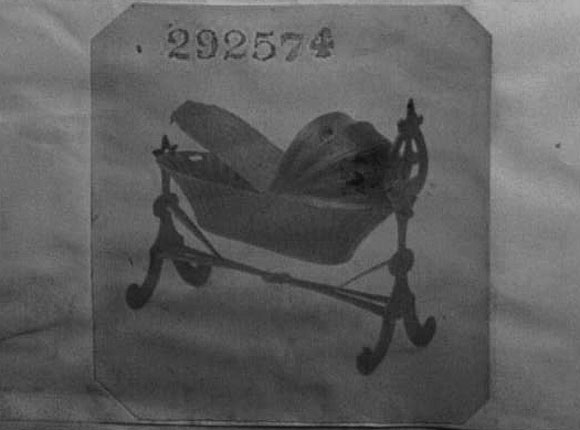
Design Representation
Design Details
Needle Case Type: |
Figural |
Patent/Registered to: |
Buncher & Haseler - Birmingham |
Patent/Design Representation #: |
Ornamental Class1: Metal: #292574 |
Patent/Design Registration Date: |
July 7, 1875 |
Location of Patent/Design Registration: |
The National Archives (TNA) - Kew, UK |
Reference #: |
TNA Representation - BT 43/38/292574
TNA Register - BT 44/3/292574 |
Dimensions: |
6 x 3 x 5.5 |
Material: |
Brass |
Name Variations: |
a) W. Avery & Son - Redditch
b) Letts, Son & Co Limited - London |
Other Variations: |
None |
Additional Photographs
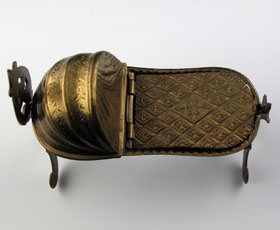
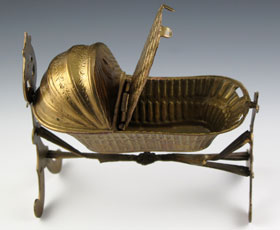
Top closed and open
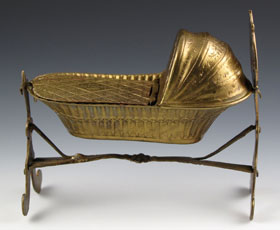
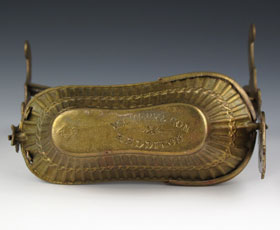
Side and botton views
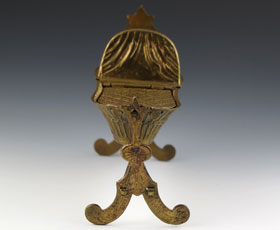
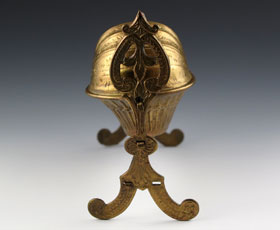
Front and back views
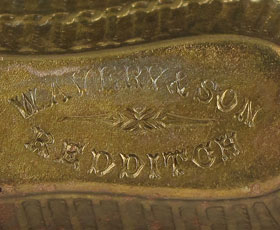
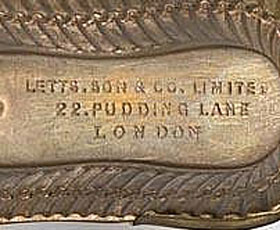
Bottom Avery signature detail and Letts signature detail (photo from eBay)
Facts
A cradle is a crib or bed made for a newborn that is portable and small enough to set next to a bed or other area so the infant can be
easily monitored. Often they are made of wood or wicker and are designed to be rocked back and forth to soothe the baby inside.
Many cradles are mounted on a trestle to raise the height so the mother or caretaker can more easily reach the infant. Once the baby is
able to sit-up or rollover, which usually occurs around the fourth month of age, the cradle is no longer safe to use.
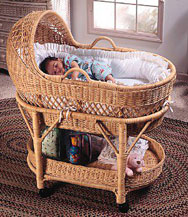
History
The cradle has been around since ancient times. Christians believe that when Jesus was born, the manger in a stable was used as his
cradle. In some cultures early cradles were simply hollowed-out logs that were made in such a way that they could be rocked gently,
whereas other societies placed their infants in a small woven basket. Native American babies were wrapped tightly in animal skins and
attached to a board that was strapped to the mother’s back. During the Victorian period, the cradle became more decorative and often
consisted of a combination of wicker, brass and lace like the one in the drawing below. Some say the cradle was raised off the ground
to prevent exposure to toxic fumes that people thought existed below knee level. Iron beds became popular toward the end of the 19th
century because they reduced the possibility of bed bug infestations or other bugs that nested in wood or wicker. Unfortunately many of
these iron beds were painted with lead paint which was toxic. Today governmental regulations protect infants from theses types of
hazards.
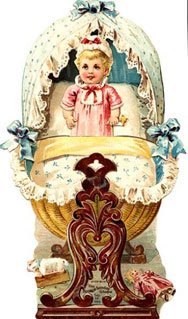
Miscellaneous
The Cradle of Civilization is a term used to describe the place were the first humans transformed from nomadic hunter gathers to an
agricultural based society. This first occurred around 10,000 BC in the Middle East region where the soil was fertile, water was
plentiful and native plants and animals were easily domesticated. Agricultural societies in the Fertile Crescent lead to the creation
of the great Mesopotamia states including the Babylonian, Sumerian and Assyrian civilizations. A consistent food supply created a
division of labor allowing individuals to specialize thereby creating a complex economy and social structure that invented writing, built
monumental structures and established a central government. The next major transition in human history took place during the 18th and
19th centuries when the United Kingdom became the cradle of the Industrial Revolution.
